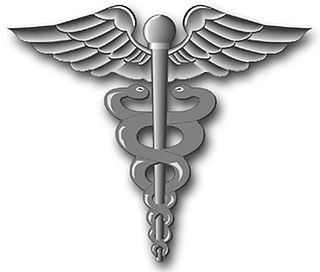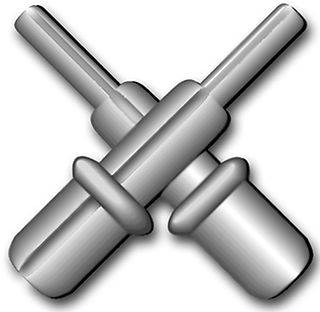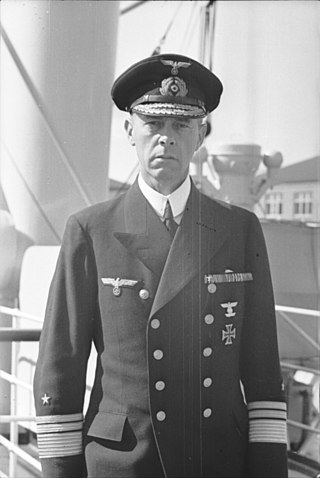
A non-commissioned officer (NCO) is a military officer who does not hold a commission. Non-commissioned officers usually earn their position of authority by promotion through the enlisted ranks. In contrast, commissioned officers usually enter directly from a military academy, officer training corps (OTC) or reserve officer training corps (ROTC), or officer candidate school (OCS) or officer training school (OTS), after receiving a post-secondary degree.

In a military navy, a rate or rating, and sometimes known as a bluejacket in the United States, is a junior enlisted sailor who is below the military rank of warrant officer. They are not a commissioned officer. Depending on the country and navy that uses it, the exact term and the range of ranks that it refers to may vary.

An airman is a member of an air force or air arm of a nation's armed forces. In certain air forces, it can also refer to a specific enlisted rank. An airman can also be referred as a soldier in other definitions.
Master chief petty officer (MCPO) is an enlisted rank in some navies. It is the ninth enlisted rank in the United States Navy and United States Coast Guard, just above Senior Chief Petty Officer (SCPO). Master chief petty officers are addressed as "Master Chief " in colloquial contexts. They constitute the top 1.25% of the enlisted members of the maritime forces.
A petty officer (PO) is a non-commissioned officer in many navies. In many nations, they are typically equal to a sergeant in comparison to other military branches. Often they may be superior to a seaman, and subordinate to more senior non-commissioned officers, such as a chief petty officers.
Seaman apprentice is the second lowest enlisted rate in the U.S. Navy, U.S. Coast Guard, and the U.S. Naval Sea Cadet Corps just above seaman recruit and below seaman; this rank was formerly known as seaman second class.

Seaman is a military rank used in many navies around the world. It is considered a junior enlisted rank and, depending on the navy, it may be a single rank on its own or a name shared by several similarly junior ranks.
A Petty officer third class is a non-commissioned officer in some navies and coast guards.
Petty officer second class (PO2) is a rank found in some navies and maritime organizations.
A United States military occupation code, or a military occupational specialty code, is a nine-character code used in the United States Army and United States Marine Corps to identify a specific job. In the United States Air Force, a system of Air Force Specialty Codes (AFSC) is used. In the United States Navy, a system of naval ratings and designators are used along with the Navy Enlisted Classification (NEC) system. A system of ratings is also used in the United States Coast Guard.

A hospital corpsman is an enlisted medical specialist of the United States Navy, who may also serve in a U.S. Marine Corps unit. The corresponding rating within the United States Coast Guard is health services technician (HS).

The United States Navy and United States Coast Guard occupational rating of gunner's mate (GM) is a designation given by the Bureau of Naval Personnel (BUPERS) to enlisted sailors who either satisfactorily complete initial Gunner's Mate "A" school training, or who "strike" for the rating by showing competence in the field of ordnance. When "striking" one isn't required to be a seaman, but must belong to one of three undesignated rates: Fireman (FN), Seaman (SN), or Airman (AN). It is also possible to cross rate to Gunner's Mate. Cross rating refers to the act of an enlisted sailor "crossing" from their current rating to another rating of their choice, provided their ASVAB scores are high enough and there are open slots for the rate.
Landsman or landman was a military rank given to naval recruits.

The Kriegsmarine was the navy of Nazi Germany prior to and during World War II. Kriegsmarine uniform design followed that of the preexisting Reichsmarine, itself based on that of the First World War Kaiserliche Marine. Kriegsmarine styles of uniform and insignia had many features in common with those of other European navies, all derived from the British Royal Navy of the 19th century, such as officers' frock coats, sleeve braid, and the "sailor suit" uniform for enlisted personnel and petty officers.

The United States Navy has nearly 500,000 personnel, approximately a quarter of whom are in ready reserve. Of those on active duty, more than eighty percent are enlisted sailors, and around fifteen percent are commissioned officers; the rest are midshipmen of the United States Naval Academy and midshipmen of the Naval Reserve Officer Training Corps at over 180 universities around the country and officer candidates at the navy's Officer Candidate School.

The Master-at-Arms (MA) rating is responsible for law enforcement and force protection in the United States Navy—equivalent to the United States Army Military Police, the United States Marine Corps Military Police, the United States Air Force Security Forces, and the United States Coast Guard's Maritime Law Enforcement Specialist. It is one of the oldest ratings in the United States Navy, having been recognized since the inception of the U.S. Navy.









